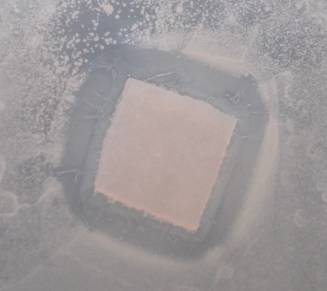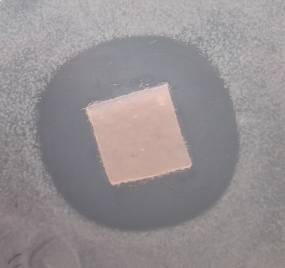Silver Alginate
Introduction
UMT’s silver alginate wound dressing takes advantage of the in-house wet-spinning process which enables silver to be added into alginate fibres and it is distributed evenly over the entire fibre structure.
The silver alginate fibres are then converted into nonwoven pad or ribbon through the alginate production facilities.

The silver alginate fibre is light sensitive, so it is packed in a foil pouch to protect against the light.
The raw material
Our sodium alginate is sourced from world reputable suppliers. Our silver material is sourced from a supplier in Europe which conform to European Pharmacopoeia (Ph.Eur.).
How does Silver Alginate Dressing work?
The primary function of UMT’s silver alginate wound dressing is absorption of wound exudates and moist wound healing. When the dressing absorbs the wound exudates, calcium in the dressing is exchanged with sodium from wound fluid turning the dressing into a gel which maintains a moist wound environment that supports the wound healing process. At the same time when the alginate gets in contact with the wound fluid, the silver ions are released from the dressing.
The silver ion kills a broad spectrum of wound bacteria, and aids in creating an antimicrobial environment.
Silver ions damage bacterial cell walls and interfere with DNA synthesis. Silver ions also denature proteins and enzymes, and inhibit protein synthesis, killing the bacterium. This multi-targeted mechanism of action means that ionic silver has a far lower propensity to induce bacterial resistance than classic antibiotic.

The chemistry of silver alginate

Features and Benefits
1. High absorption and fluid retention:The silver alginate wound dressing can absorb large amounts of wound exudates then forms a gel to protect the wounds and encourage wound healing.
2. The gel forming characteristic of the alginate can help the provision of moist healing environment.
3. Wet integral and easy removal: The silver alginate wound dressing can be removed in one piece.
4. Effective for a wide spectrum of organism and antimicrobial efficiency for 7 days: Silver Alginate Dressing has been proven in vitro to kill wound microorganisms within the dressing and help to create an antimicrobial environment. It has shown antimicrobial effect against relevant wound bacteria, such as Methicillin-Resistant Staphylococcus epidermidis (MRSE), Vancomycin-Resistant Enterococcus faecalis (VRE), Staphylococcus aureus, Escherichia coli, Pseudomonas aeruginosa, and Klebsiella pneumonia ssp pneumonia. It has shown antifungal effect against Candida albicans in vitro setting[Ref 1].
Log Reduction
Log reduction data of UMT’s silver alginate wound dressing (negative control: standard alginate dressing).







Zone of inhibition


Staphylococcus aureus Pseudomonas aeruginosa
Indications
Under the supervision of a healthcare professional, Silver Alginate Wound Dressing may be used for the management of:
- Wounds where there is an infection or an increased risk of infection;
- Partial thickness (second degree) burns;
- Diabetic foot ulcers, leg ulcers, and pressure ulcers/sores (partial & full thickness);
- Surgical wounds left to heal by secondary intention;
- Traumatic wounds;
- Wounds that are prone to bleeding, such as wounds that have been mechanically or surgically debrided.
[Ref 1] [UMT CN0017957 ].


